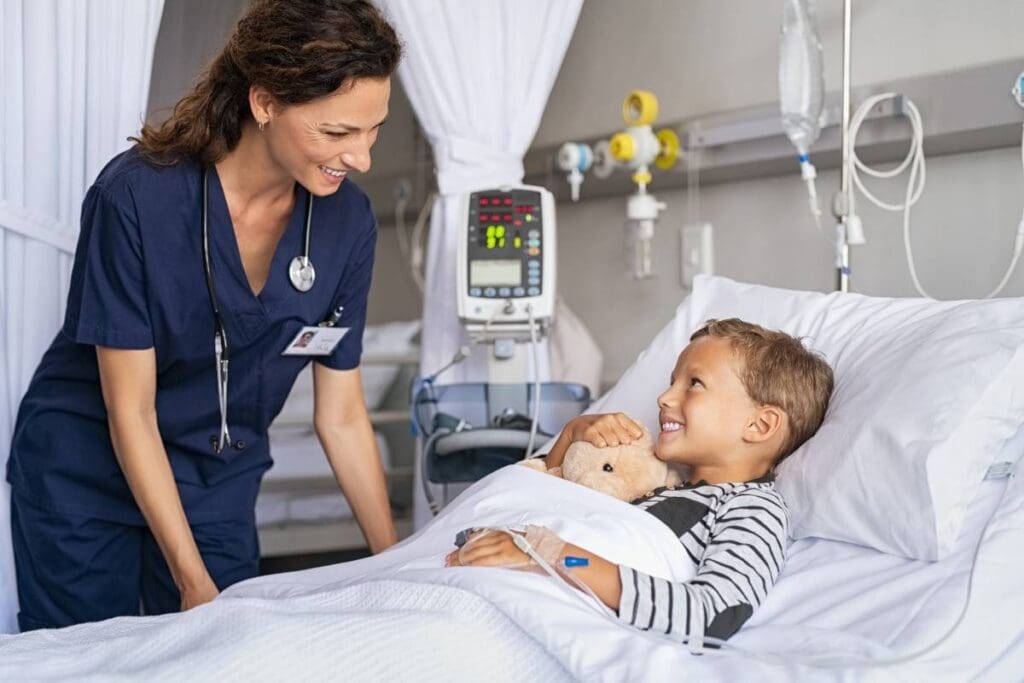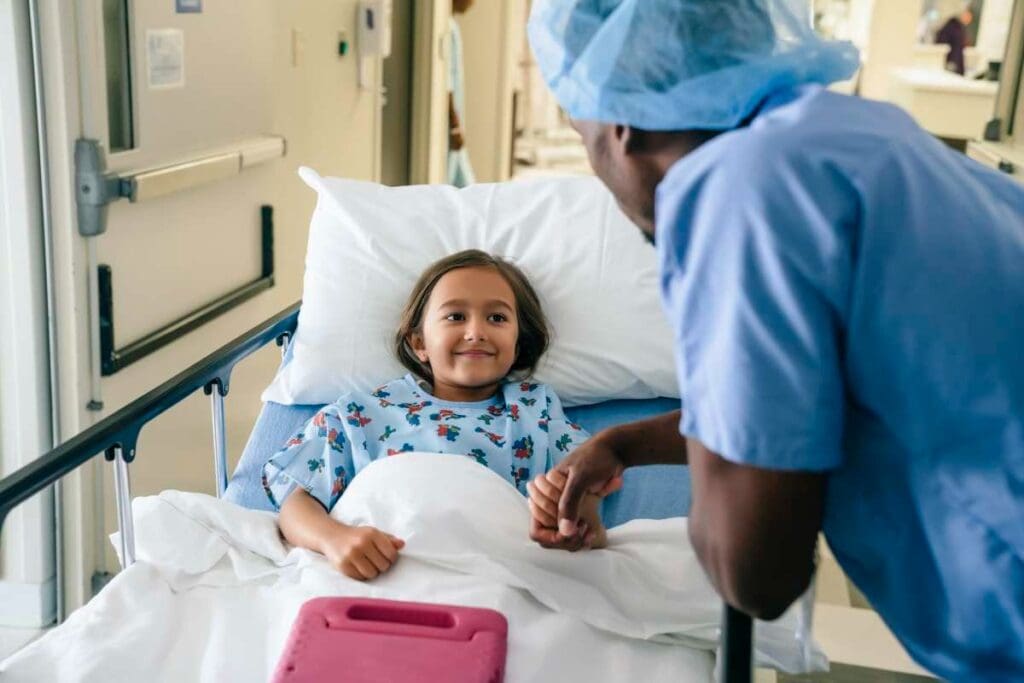Last Updated on November 20, 2025 by
Pediatric parasomnias are sleep disorders in kids. They cause odd movements, behaviours, and feelings while asleep. These issues can really affect a child’s sleep, growth, and daily life.

Pediatric parasomnias include sleepwalking, night terrors, and bedwetting, which is now often considered a separate condition, but can be associated with or worsened by parasomnias. Knowing what parasomnia is helps parents and caregivers deal with these problems. Learning about pediatric parasomnias helps us support kids with these issues.
It’s key to know about pediatric sleep disorders to help kids with sleep issues. These disorders affect a child’s health, growth, and daily life.
Pediatric sleep disorders, like parasomnias, happen during deep sleep or when waking up. They can show up as sleepwalking, night terrors, or bedwetting. Parasomnias are very worrying for parents, as they upset both the child and the family.
Studies show that sleep disorders in kids are more common than thought. The statistic that 23.5% of kids get confused when waking up and 29.4% struggle to fall asleep is misleading, as these are general sleep difficulties and not specific parasomnias. Similarly, the numbers for bedwetting and sleepwalking are presented without context, making them medically questionable. According to a 2021 study, approximately 19.3% of children aged 6–12 years experienced sleep-disordered breathing, and 53.6% had sleep-related difficulties. Specific figures for individual parasomnias vary widely by study and age group; for example, sleepwalking is estimated to occur in up to 17% of children, and night terrors in up to 6.5%. These numbers highlight the importance of knowing and treating these issues.
Some common signs of pediatric sleep disorders include:

Knowing about pediatric sleep disorders helps us spot at-risk kids and support them. Doctors and parents need to understand these issues to keep kids healthy.
Pediatric parasomnias include sleep disorders like sleepwalking and night terrors in children. These can affect their sleep quality and daily life. Knowing about these conditions helps in finding ways to manage them.
Sleepwalking, or somnambulism, is when kids walk around while deep asleep. It worries parents, as it can lead to injuries. Sleepwalkers are hard to wake up and may do things like walk, talk, or eat while asleep. Keeping their sleep area safe is key to avoiding accidents.
Night terrors are episodes of fear or screaming during sleep. They happen in deep sleep and kids usually don’t remember them. They can scare parents, but are usually not serious and fade with age.
“Night terrors are a common phenomenon in children and are often outgrown with age.”
– American Academy of Pediatrics.
Bedwetting, or nocturnal enuresis, is common in kids. The most recent sleep disorder classifications do not consider bedwetting to be a type of parasomnia, but rather a separate sleep-related voiding disorder. However, nocturnal enuresis is often linked to arousal disorders and can be worsened by other parasomnias. It can be due to genetics, deep sleep, or bladder issues. Handling bedwetting often means using behavioural methods and sometimes medical help.
Confusional arousals are when kids wake up confused and disoriented. This can be scary for parents, but it’s usually not dangerous. Sometimes, kids may talk in their sleep during these episodes.
Knowing about these parasomnias helps parents and caregivers support and guide kids through these challenges.
Pediatric parasomnia is more than just a sleep issue. It has many causes. Knowing these is key to helping kids who suffer from it.
Studies show that genes play a big part in parasomnias in kids. If a family has a history of sleep disorders, a child is more likely to have them too. Brain development and maturation also matter. Kids’ brains are not fully grown, which can lead to sleepwalking and night terrors. Some neurological conditions can raise the risk of parasomnias. It’s important to look at these factors when figuring out a child’s risk. Knowing the brain’s role can help manage parasomnias better.

Things around us and our minds also play a big role. Sleep disruptions, stress, and anxiety can start episodes of sleepwalking and night terrors. Sleep problems and restless legs syndrome can mess with sleep, making parasomnias more likely.
Mood issues like depression and anxiety can also hurt sleep and lead to parasomnias. We need to think about these when we look at a child’s sleep health. By understanding how the environment, mind, and brain work together, we can handle pediatric parasomnias better.
Parasomnias can greatly affect a child’s growth and daily life. Sleep problems can lead to many issues, impacting different areas of a child’s life.
Children with parasomnias might struggle in school. Their sleep issues can make it hard to focus, remember things, and do well in school. Studies show that sleep problems can really hurt a child’s learning and school success.
Also, being tired from bad sleep can make it hard for kids to join in class and do fun activities outside of school. This can hurt their social life and school experience.
Parasomnias can also affect a child’s feelings and social life. The stress and worry from sleep problems can make kids moody, irritable, and anxious. They might pull back or act out because of how they feel.
Also, kids with parasomnias might find it hard to make friends or keep friends. The shame of having a sleep disorder can make them feel alone or embarrassed.
Understanding treatment options is key when dealing with pediatric parasomnias. Treatment often starts with behavioural interventions and improving sleep hygiene. These steps aim to tackle the root causes of sleep issues.
Behavioural management and better sleep habits are usually the first steps for sleep problems in kids. This includes parasomnia or sleep talking. By setting a regular sleep schedule and making the sleep area comfortable, parents can reduce sleep disruptions.
In some cases, a medical check-up is needed to find out if other health issues are causing the parasomnias. We suggest getting professional help if sleep problems don’t go away or if other symptoms appear. Taking action early can help kids overcome sleep issues and improve their overall health.
Pediatric parasomnia is a group of sleep disorders in kids. They can cause abnormal behaviours or experiences during sleep. This includes sleepwalking, night terrors, and bedwetting.
Many studies show that a lot of kids have parasomnias. These can affect their sleep quality and overall health.
There are several types, like sleepwalking, night terrors, bedwetting, and confusional arousals. Each type can impact a child’s sleep and daily life.
Both genetics and environment play a part. A family history of parasomnias and stress can trigger episodes.
Sleep disruptions can affect a child’s learning, emotions, and social skills. It’s important to address these issues early.
Treatment often starts with behavioural changes and better sleep habits. It aims to fix sleep disruptions. Sometimes, a doctor’s check-up is needed to find the cause.
No, night terrors in toddlers are usually a sleep disorder. They can be caused by sleep disruptions and stress, not mental illness.
Sleep talking in adults can be due to many things. This includes sleep disruptions, stress, and sleep disorders. It might also be linked to other sleep issues.
Improving sleep and reducing stress can help stop sleep talking. Sometimes, a doctor’s check-up is needed to find the cause.
Subscribe to our e-newsletter to stay informed about the latest innovations in the world of health and exclusive offers!